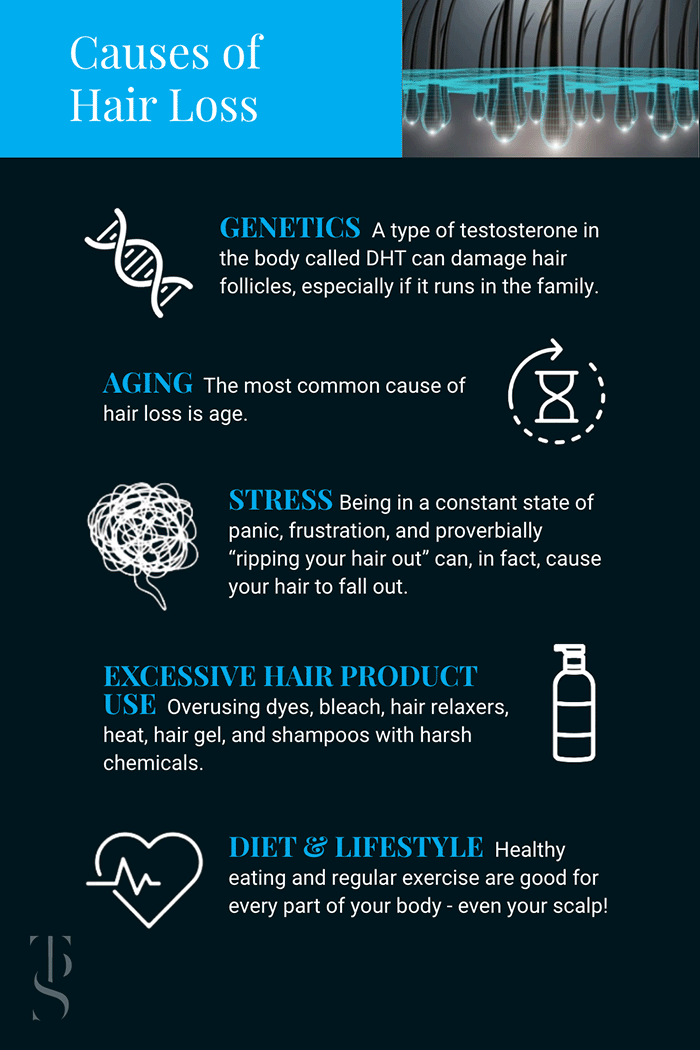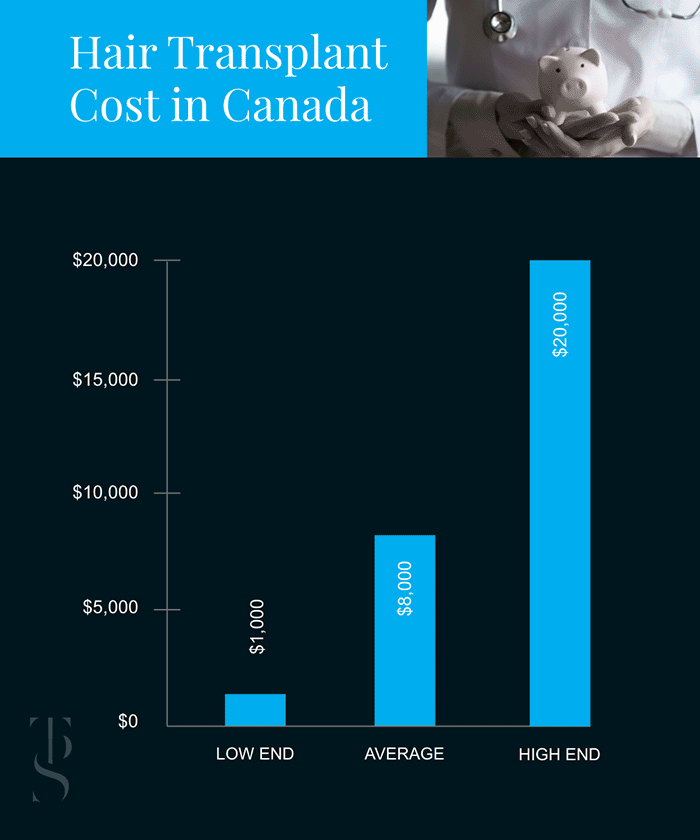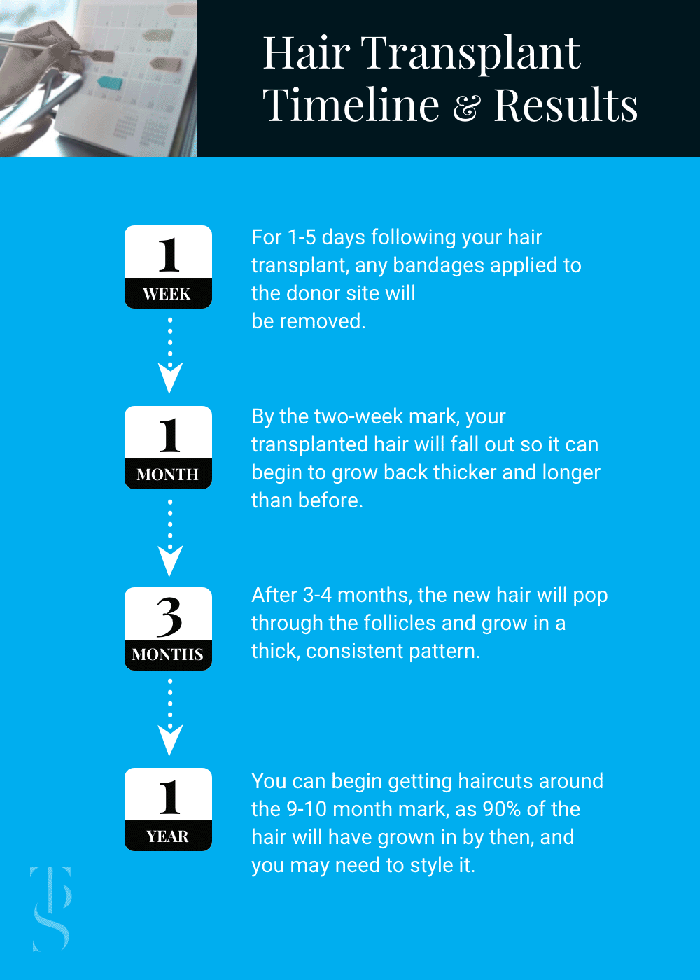July 31st, 2025
Dr. Mulholland, Md
What is a Hair Transplant?
A hair transplant can vary in methods and techniques, from Follicular Unit Extraction (FUE), the Neograft hair transplant technique, female hair transplants, strip graft repair, or the Artas hair transplant method. A hair transplant can take anywhere from 3 to 10 hours, and when performing any hair transplant, Toronto Plastic Surgeons begins by consulting with you to fully understand your aesthetic goals, areas of concern, and medical history.
During your hair transplant procedure, the hair grafts are removed from the donor area, properly prepared, and inserted into the recipient area. You will be under local anesthetic to reduce your chances of experiencing any discomfort.
The tiny puncture wounds on the donor site and recipient area will heal later, often forming small crusts that fall off within two weeks.
Causes of Hair Loss
Hair loss has many causes, from genetics to stress. Some of the main causes of hair loss include:

- Genetics. A type of testosterone in the body called DHT can damage hair follicles, especially if it runs in the family. When more of this hormone is produced, your hair becomes more fragile and thins out. DHT depends entirely on an individual’s genes, and if you have older family members who are balding or have thinning hair, you may be susceptible to hair loss.
- Aging. The most common cause of hair loss is age. As we age, we lose a lot of hormones and proteins that keep our skin firm, our hair thick, and our body resilient. Just like wrinkles result from lost collagen and repeated movements, thinning hair is a natural part of the aging process.
- Stress. Being in a constant state of panic, frustration, and proverbially “ripping your hair out” can, in fact, cause your hair to fall out. When you’re stressed, your corticosterone levels reduce, causing acne to appear on the skin and hair growth to reduce.
- Excessive Hair Product Use. Overusing dyes, bleach, hair relaxers, heat, hair gel, and shampoos with harsh chemicals damages your hair follicles over time to become brittle and thinning or falling out.
- Diet & Lifestyle. Healthy eating and regular exercise are good for every part of your body – even your scalp! If you eat too little repeatedly for a prolonged period, you will find that the protein in your nails and hair weakens, causing both to become extremely fragile.
Types of Hair Transplants
Toronto Plastic Surgeons offers FUE hair transplant options with various treatment methods, including the traditional method or via Artas or NeoGraft technology. While we do not offer FUT (Follicular Unit Transplantation) as it is an outdated version of FUE, we will still explain the differences between FUE vs. FUT to keep you informed.
FUE
As the modern approach to hair transplantation, Follicular Unit Extraction is a detailed process. Individual hairs are extracted from the donor site (typically at the back of your hair, where your hair is the thickest) using a hollow needle. The hair is then processed and inserted into the recipient site (wherever your hair is thinning or receding). This process can be performed by the ARTAS robot, the NeoGraft method.
Advantages
Some of the advantages of FUE include:
- Undetectable scarring, as no stitches or linear incisions are involved.
- The procedure uses advanced technology and techniques to ensure detailed precision and seamless results.
- It is the most comfortable option of all hair transplantation methods.
- FUE boasts a faster recovery time, especially compared to FUT, as the wounds that need to heal are very small punctures.
Disadvantages
There is the chance that it is difficult to grasp the entire follicular unit from the donor site, resulting in a lower hair density when the recipient site shows regrowth. Since the procedure also involves small puncture wounds, there is a risk of infection if you do not properly follow the aftercare instructions. Lastly, right after your procedure, you will experience some swelling, discomfort, and scabbing for 1-2 weeks, which will go away independently and can be soothed with a cold compress or over-the-counter pain medication.
Methods
Neograft involves a hand-held punch drill that dissects and grafts hairs from the donor area to the recipient site. Vacuum suction from the device extracts the follicle, and the drill creates small punctures in the recipient area to place the follicles within.
The ARTAS Robot is a completely human-free method of performing an FUE hair transplant with robotic precision and high accuracy rates. This technology boasts real-time 3D digital analysis of your hair follicles to see which area of the scalp is best for harvesting hair. A two-needle dissection technique gives this method the benefit of minimal scarring and the ability to harvest multiple hairs per graft.
FUT
Follicular Unit Transplantation involves a whole strip of hair being taken from the donor site and fragmented, earning it the nickname “the strip method”. It is similar to the FUE method, but FUT involves more invasiveness, less natural-looking results, and a higher risk for infection.
Advantages
Some advantages of the FUT method of hair transplantation include:
- Like FUE, it is a long-term hair transplantation solution.
- Side effects after the procedure will alleviate themselves within weeks of the transplant.
- Improved self-esteem for the patient.
Disadvantages
FUT, unfortunately, carries some disadvantages. Some disadvantages of FUT include:
- Unnatural results from large strips of hair being placed into the recipient area(s) instead of individual follicles being strategically inserted.
- Side effects after your procedure include swelling, tension, bleeding, redness, and numbness (these side effects will subside within a few weeks).
- Visible scarring that can only be hidden if you grow your hair past your neck. Otherwise, there will be a relatively large scar on the back of your head.
- Discomfort after your operation can last a long time while the stitches and donor area recover, making sleeping very difficult.
- Slower recovery, as you have to wait for stitches to heal and avoid all physical activity until they are fully healed to prevent the scar from widening and opening up.
- Scalp stretching can occur after multiple hair transplant sessions – so if you suffer from progressive baldness, a FUT hair transplant is not for you.
What is the Best Hair Transplant Method?
The “best” method by which your hair transplant is performed is determined by the severity of your baldness, your desired outcome, and the amount of hair you have on your body that can be used for the transplant. Your medical history and budget will also be considered, as manual vs. robotic transplants can impact the cost.
For the best hair transplant results, book a consultation with the Toronto Plastic Surgeons team so we can create a unique treatment plan catered to your specific concerns and goals.
How Much Does a Hair Transplant Cost in Canada?
While the average hair transplant cost in Canada is usually around $8,000, various factors can make that price go down (to as little as $1,000) or up (to as much as $20,000) – it all depends. When figuring out your hair transplant costs, you will need to compare the different methods available to you during your consultation along with other factors like the severity of your concerns, how long your treatment will take, your medical history, and your personal preferences.

Learn more about pricing and the cost of hair transplants on the Toronto Plastic Surgeons website and during your consultation.
Hair Transplant Timeline & Results

One Week After Your Hair Transplant
For 1-5 days following your hair transplant, any bandages applied to the donor site will be removed. The grafts on the recipient area should not be touched, even if bandages are on them. Your scalp will be very susceptible to damage during this time, so stay out of the sun and watch out for swelling around the eyes or forehead. This swelling can be reduced with sleep, over-the-counter medication, and a cold compress.
You will have a healed donor area within 5-7 days after your treatment. On day 5, gently wash your hair to encourage scabs to fall off independently. During this recovery period, please avoid itching or scratching your scalp, as it can prolong the healing process and make your scalp prone to infection.
One Month After Your Hair Transplant
By the two-week mark, your transplanted hair will fall out so it can begin to grow back thicker and longer than before. All scabs and itching will be gone, so you can return to your normal shampooing routine. Do not shave or cut your hair during this time, as you need to go through the “falling out” process to achieve full results.
Three Months After Your Hair Transplant
After 3-4 months, the new hair will pop through the follicles and grow in a thick, consistent pattern. Enjoy the growth during this time and do not cut it – but feel free to style it and shampoo how you like. After 5 months, around 50% of the new hair will have grown, covering bald spots.
One Year After Your Hair Transplant
You can begin getting haircuts around the 9-10 month mark, as 90% of the hair will have grown in by then, and you may need to style it. After 12-18 months, your results will be visible and ready to enjoy.
Hair Transplant Results
You will begin to see results after 6-9 months after your hair transplant, but your final results may not reveal themselves until the 1-year mark. Your transplanted hair will fall out during the first few weeks after your procedure – this is completely normal, so don’t be alarmed! New hair growth will begin during the fifth or sixth month.
Post-Operation Aftercare
To care for your scalp after your hair transplant, don’t wash your hair for the first few days. Using a mild shampoo, you can gently massage the scalp with lukewarm water once a day around the 3-5 day mark.
After 3 months, you will see hairs grow from the recipient area in the donor site’s original shape, colour, and structure. You should not dye your hair or use hair products that contain heavy chemicals for the first year until you are fully healed. Do not participate in activities that cause you to sweat excessively for the first week after your hair transplant, and avoid swimming, saunas, and prolonged sun exposure for the first month.
Aftercare instructions are integral to follow, and there can be many details you should be aware of.
Alternatives to Hair Transplants
There are three main alternatives to hair transplants. Trying non-invasive options before pursuing a permanent solution is typically the first thing our patients try.
- Rogaine. Rogaine Minoxidil, often referred to as Rogaine, works by penetrating the hair follicles and rejuvenating them so they can produce stronger hairs that grow for a longer period. Rogaine is not medically proven to cause hair growth, however.
- Volumizing Shampoo. Hair loss shampoos are often targeted toward men and women who want to treat baldness or thinning hair, but you will rarely see any results.
- Supplements. Supplements work very similarly to volumizing shampoo – they strengthen the hair that remains but will not cure baldness or a receding hairline.
Figure out which hair transplant option is best for you and understand the causes of your hair loss so you can find the right solutions with the Toronto Plastic Surgeons team today.
Hair Transplant FAQs
Can You Wear a Hat After a Hair Transplant?
We advise against wearing a hat right after your hair transplant. You must wait until you are fully healed to wear any time of hat, as it can remove or shift the grafts and compromise your results.
How Should I Sleep After a Hair Transplant?
After your hair transplant, keep your head straight and elevated to promote proper blood flow, reduce swelling, and encourage quick hair growth.
When Can I Wash My Hair After My Transplant?
Wait 1-2 days post-op before shampooing, and when you pass that time, shampoo with lukewarm water and a gentle soap, carefully pouring the water on your head with your hands, and not rubbing your scalp too hard when shampooing. During recovery, shampooing should be done daily to help remove your scabs and promote healing. Scabs should be gone in about 10 days, and you can return to your normal hair washing routine 2 weeks after your transplant.
When Can I Get a Haircut After a Hair Transplant?
You should wait at least three weeks before getting a haircut after your hair transplant, but it is best to let it grow! After two months, your transplanted hair will begin to grow, and you can style it however you’d like.
{
“@context”: “https://schema.org”,
“@type”: “FAQPage”,
“mainEntity”: [{
“@type”: “Question”,
“name”: “Can You Wear a Hat After a Hair Transplant?”,
“acceptedAnswer”: {
“@type”: “Answer”,
“text”: “We advise against wearing a hat right after your hair transplant. You must wait until you are fully healed to wear any time of hat, as it can remove or shift the grafts and compromise your results.”
}
},{
“@type”: “Question”,
“name”: “How Should I Sleep After a Hair Transplant?”,
“acceptedAnswer”: {
“@type”: “Answer”,
“text”: “After your hair transplant, keep your head straight and elevated to promote proper blood flow, reduce swelling, and encourage quick hair growth.”
}
},{
“@type”: “Question”,
“name”: “When Can I Wash My Hair After My Transplant?”,
“acceptedAnswer”: {
“@type”: “Answer”,
“text”: “Wait 1-2 days post-op before shampooing, and when you pass that time, shampoo with lukewarm water and a gentle soap, carefully pouring the water on your head with your hands, and not rubbing your scalp too hard when shampooing. During recovery, shampooing should be done daily to help remove your scabs and promote healing. Scabs should be gone in about 10 days, and you can return to your normal hair washing routine 2 weeks after your transplant.”
}
},{
“@type”: “Question”,
“name”: “When Can I Get a Haircut After a Hair Transplant?”,
“acceptedAnswer”: {
“@type”: “Answer”,
“text”: “You should wait at least three weeks before getting a haircut after your hair transplant, but it is best to let it grow – that’s why you got the procedure, after all! After two months, your transplanted hair will begin to grow, and you can style it however you’d like.”
}
}]
}



